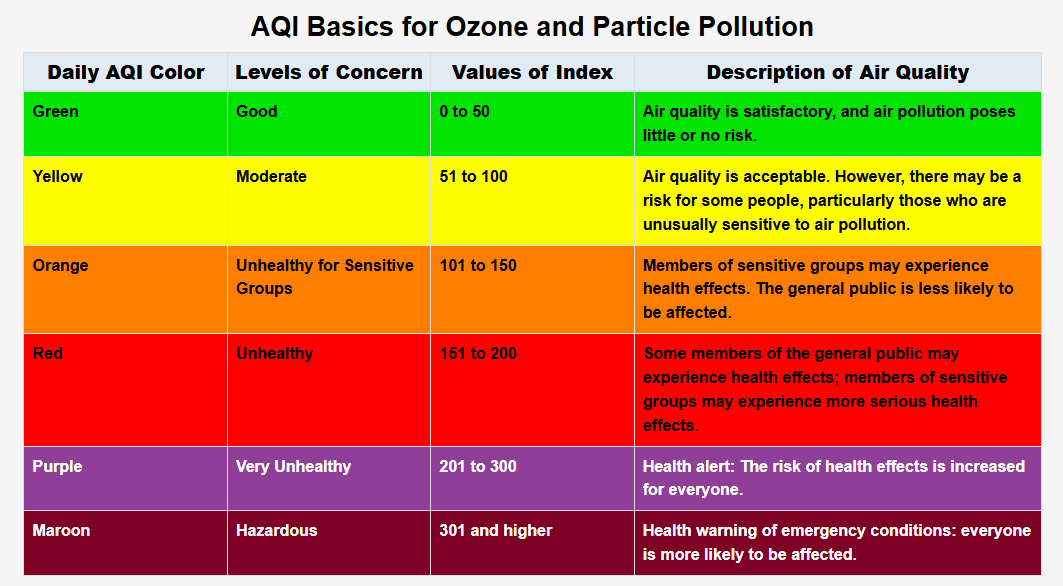The web Browser you are currently using is unsupported, and some features of this site may not work as intended. Please update to a modern browser such as Chrome, Firefox or Edge to experience all features Michigan.gov has to offer.
Sign up for air quality alerts as summer season begins
June 09, 2025
With the recent fine particulate air quality advisories issued in Michigan due to wildfires in Canada, now is the time to sign up for air quality alerts.
“The 2023 Canadian wildfire event emphasized how important communication is when wildfire smoke may impact Michigan’s communities,” said Annette Switzer, EGLE’s Air Quality Division director. “We want to ensure residents are informed and know how to protect themselves and their families.”
When levels of fine particulate matter are elevated, conditions may be unhealthy for sensitive groups. Signing up for air quality alerts is the best way to stay informed about Michigan’s air quality.
Pictured: Smoky sky at sunset over Lake Lansing in Haslett, Mich. on June 1, 2025. Credit: Cheri Riemer.
What is the difference between an advisory and an alert?
An Advisory is called when two or more (or widespread) monitors are expected to reach or exceed the Unhealthy for Sensitive Groups (USG, Orange air quality index (AQI) threshold. The Advisory is designed to raise awareness for those who are particularly sensitive to USG level Fine Particulate (PM2.5) levels, along with raising awareness for those who are not directly affected but could still take action to help lower the overall pollution levels.
An Alert is called when two or more (or widespread) monitors are expected to reach or exceed the Unhealthy threshold. The Alert range is for Unhealthy (Red AQI), Very Unhealthy (Purple AQI), and Hazardous (Maroon AQI) pollution thresholds. The Alert is designed to raise heightened awareness because all health groups are included, can be affected, and should take action to help protect themselves. The Alert is not designed to negate the AQI categories/thresholds as there is different messaging within said thresholds. The Alert will include the expected AQI Categories to help people understand forecasted pollution levels.
An advisory or alert may be called for ozone, particulate matter, or both.
The Air Quality Index:
The Air Quality Index, or AQI, provides a color-coded framework for residents to see the levels of some types of air pollution in their area. The higher the AQI, the worse the air quality and the more cause for concern.
Currently, the AQI for particulate matter (PM) is high in many parts of Michigan due to smoke and fires in the U.S. and in parts of Canada. The AQI is used for ground-level ozone and particulates.
How to sign up for alerts:
You can sign up for alerts through the EnviroFlash system. This subscriber system enables you to select the area for which you would like to receive alerts. The system will send the alert directly to your email or send you a text message.
Protecting your health during smoke events:
The Michigan Department of Health and Human Services (MDHHS) urges residents to monitor air quality conditions in their area and adjust their level of physical activity according to the Your Health and Wildfire Smoke guidance. People with heart or lung disease, older adults, children, and teens, pregnant people and outdoor workers may be more susceptible to the impacts of wildfire smoke.
“We want Michigan families to know how to best take precautions to protect their health and safety during air quality events,” said Dr. Natasha Bagdasarian, chief medical executive. “We urge Michiganders to check the Air Quality Index regularly to decide if they should be participating in outdoor activities and use the website to help determine what actions they should take to keep themselves and their families safe.”
Outdoor recreation activities
Smoke from wildfires may affect some individuals participating in outdoor recreational activities.
“We urge folks to plan accordingly by taking precautions based on the current conditions, air quality advisories and recommendations and forecasts,” said John Pepin, Michigan Department of Natural Resources deputy public information officer. “Always play it safe, know before you go and plan ahead.”
In addition, always check to see if burning is permitted in your area before you decide to burn by checking to map and regulations at Michigan.gov/BurnPermit. Always pack safety with you before conducting any type of burning activity.
For more tips on burning and fire safety, visit the DNR’s Fire Management web page.
Additional helpful resources:
These resources may be helpful to you if you are looking to learn more about air quality in your area, specifically around wildfires and smoke impacts.
- US EPA Wildfires and Smoke map
- EGLE MiAir AQI Map and Air Monitoring Information
- US EPA Interactive Map of Air Quality
- US EPA Fires and your health
- US EPA Particle Pollution
- “When smoke is in the air” by AirNow
- Is burning allowed? and Michigan.gov/OpenBurning
Changing weather conditions can affect how and when wildfire smoke may impact the state. The EGLE meteorological team continues to monitor the situation and will issue additional guidance as needed.
Media Contact:
